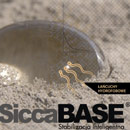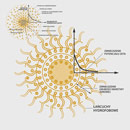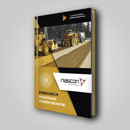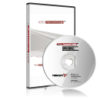Understanding how to improve energy usage in your home can lead to significant reductions in utility bills. Many homeowners are unaware of simple modifications that enhance their living spaces' energy performance. By implementing practical diy tips and conducting periodic energy audits, you can create a more sustainable environment.
Small changes, such as sealing doors and windows or optimizing heating and cooling systems, can have a tremendous impact. Engaging in discussions about energy efficiency not only benefits your wallet, but also contributes to a healthier planet. Embrace these insights to maximize your home's energy potential and discover the advantages they bring.
How to Optimize Your Home Insulation for Maximum Retention
Optimizing your home insulation can lead to significant energy savings. The first step is to assess your current insulation levels. Check the attic, walls, and floors for gaps or inadequate coverage. Often, older homes lack sufficient insulation, so consider adding more as a DIY project.
Sealing gaps and cracks is a practical way to improve insulation effectiveness. Use caulk for smaller gaps around windows and doors, and expanding foam for larger openings. These simple DIY tips can prevent drafts and make your home more comfortable.
Consider installing weather stripping around doors and windows. This allows for more control over indoor temperatures and reduces the need for heating or cooling. Additionally, curtain rods or thermal curtains can help maintain indoor warmth during colder months.
If your attic lacks insulation, adding a layer can significantly enhance heat retention. Use fiberglass batt insulation or spray foam for areas that are hard to reach. Remember to wear protective gear while working with insulation materials to ensure safety.
Evaluate your basement insulation, as well. Insulating basement walls can prevent heat loss and improve overall energy retention. You may also choose to insulate water pipes to reduce heat loss in the plumbing system.
Finally, regularly monitor your insulation condition. Look out for signs of moisture or mold, which could indicate issues needing attention. Keeping a check on insulation integrity can help maintain maximum retention throughout the year.
Best Practices for Smart Thermostat Usage in Everyday Life
Utilizing a smart thermostat can significantly enhance home efficiency and contribute to comfort improvement. One of the best diy tips is to program your thermostat according to your schedule. Set it to lower the temperature during work hours and increase it right before you return home. This method prevents unnecessary heating while you're away.
Another practice is to take advantage of the learning features available in many smart thermostats. These devices often learn your habits and adjust accordingly, offering optimal performance without manual adjustments. Allow your thermostat to gather data over some time to find the best settings for your lifestyle.
Ensure your thermostat is placed in a suitable location. Avoid direct sunlight and areas near HVAC vents. A well-placed thermostat accurately reflects the indoor temperature, leading to better climate control and energy savings.
Regularly update your thermostat's software. Manufacturers frequently release updates that improve functionality and energy management. Keeping your device current can enhance its performance and help maintain optimal home efficiency.
Consider integrating your smart thermostat with other smart home devices. For instance, connecting it to smart blinds or shades can improve insulation during the hottest or coldest parts of the day, further enhancing comfort while saving energy.
Finally, monitor your energy usage regularly. Many smart thermostats provide insights into your consumption patterns. Use this data to make informed changes, ensuring that your efforts towards comfort improvement and energy savings are well-directed.
Key Changes in Lighting Choices to Reduce Energy Consumption
Switching to LED bulbs is one of the most impactful changes to improve home efficiency. These bulbs consume significantly less power compared to traditional incandescent and fluorescent options, leading to substantial energy savings over time. In addition to lower utility bills, LED lighting often lasts longer, reducing the need for frequent replacements.
Utilizing smart lighting solutions can also provide comfort improvement. Consider installing dimmer switches or utilizing smart bulbs that allow you to adjust brightness levels based on your needs. This not only enhances ambiance but also decreases energy usage when full brightness is unnecessary.
Incorporating natural light into your home can further lead to energy savings. Position mirrors strategically and use light-colored curtains to enhance daylight access, minimizing reliance on artificial lighting during the day. Regular energy audits can help assess how well your current lighting setup functions, enabling more informed decisions on modifications.
For DIY enthusiasts, creating outdoor lighting systems with solar-powered options is another effective method. This approach reduces dependence on grid electricity while beautifying your outdoor space. By making these changes, you contribute to overall home efficiency while enjoying improved lighting quality and comfort.
To learn more energy efficiency tips, visit https://homeenergyhub.org/.












